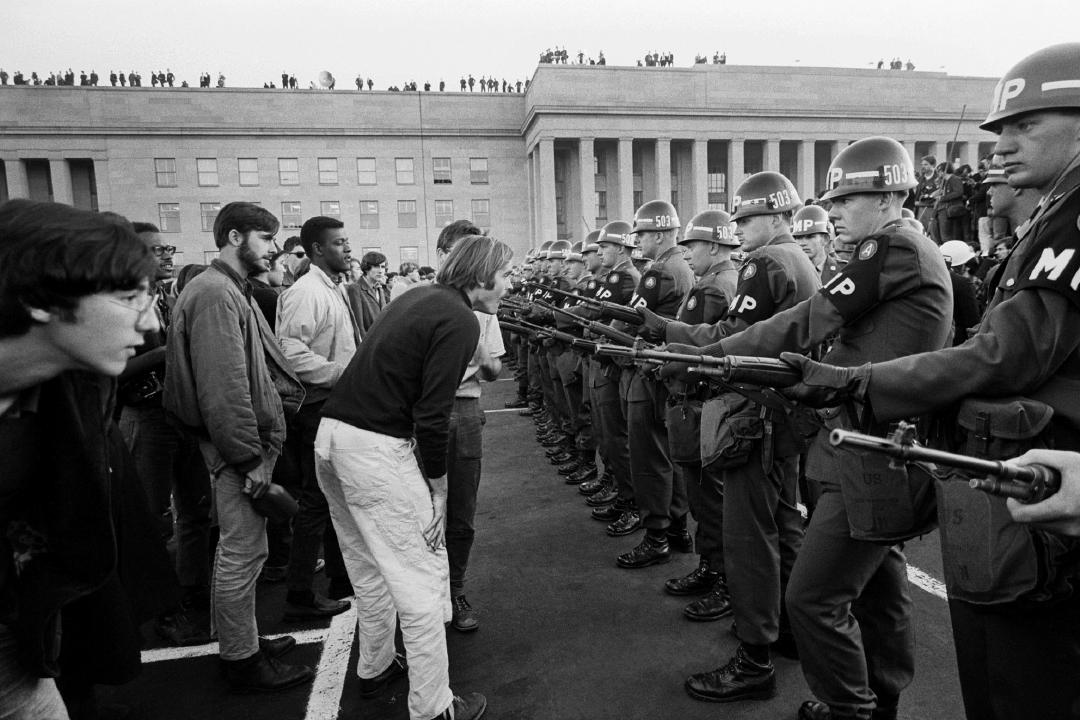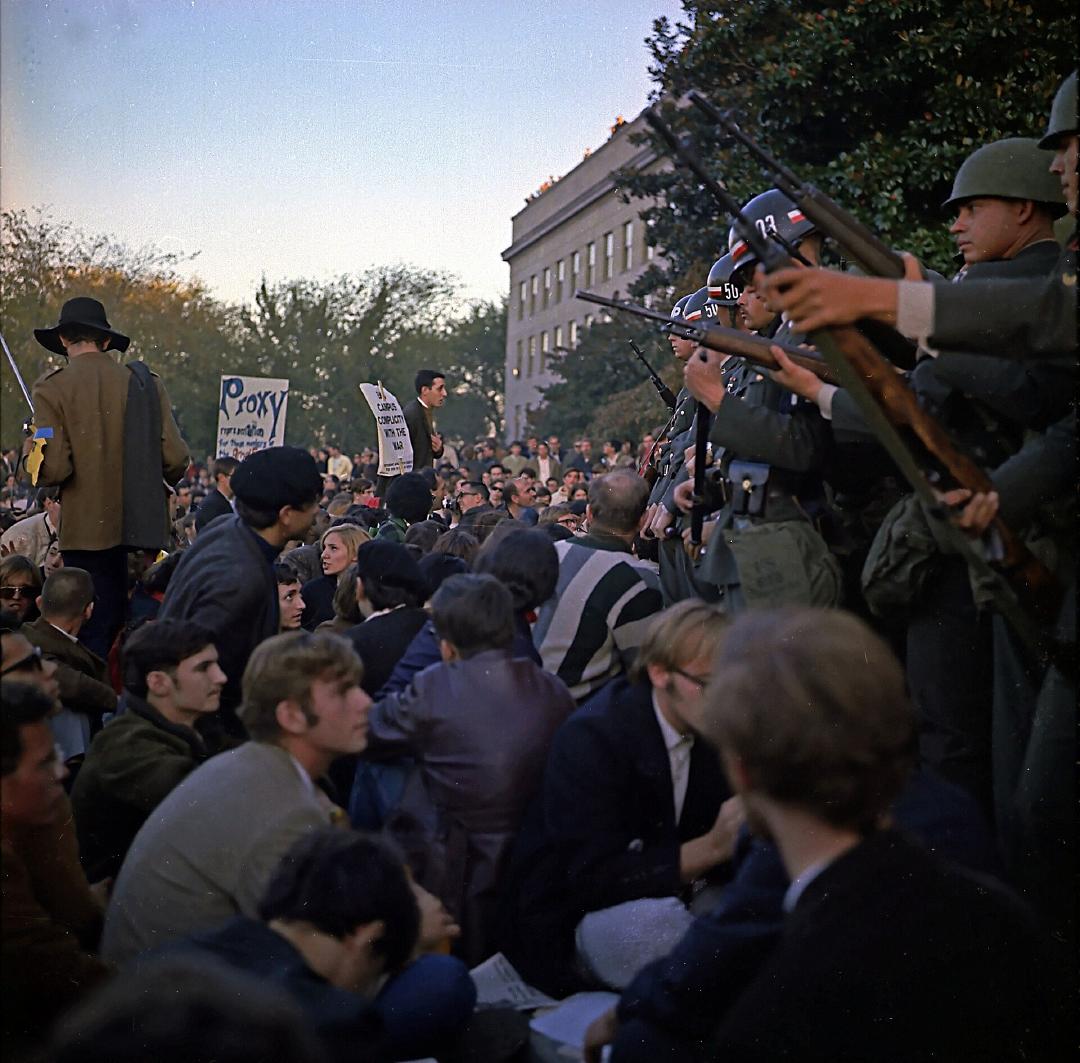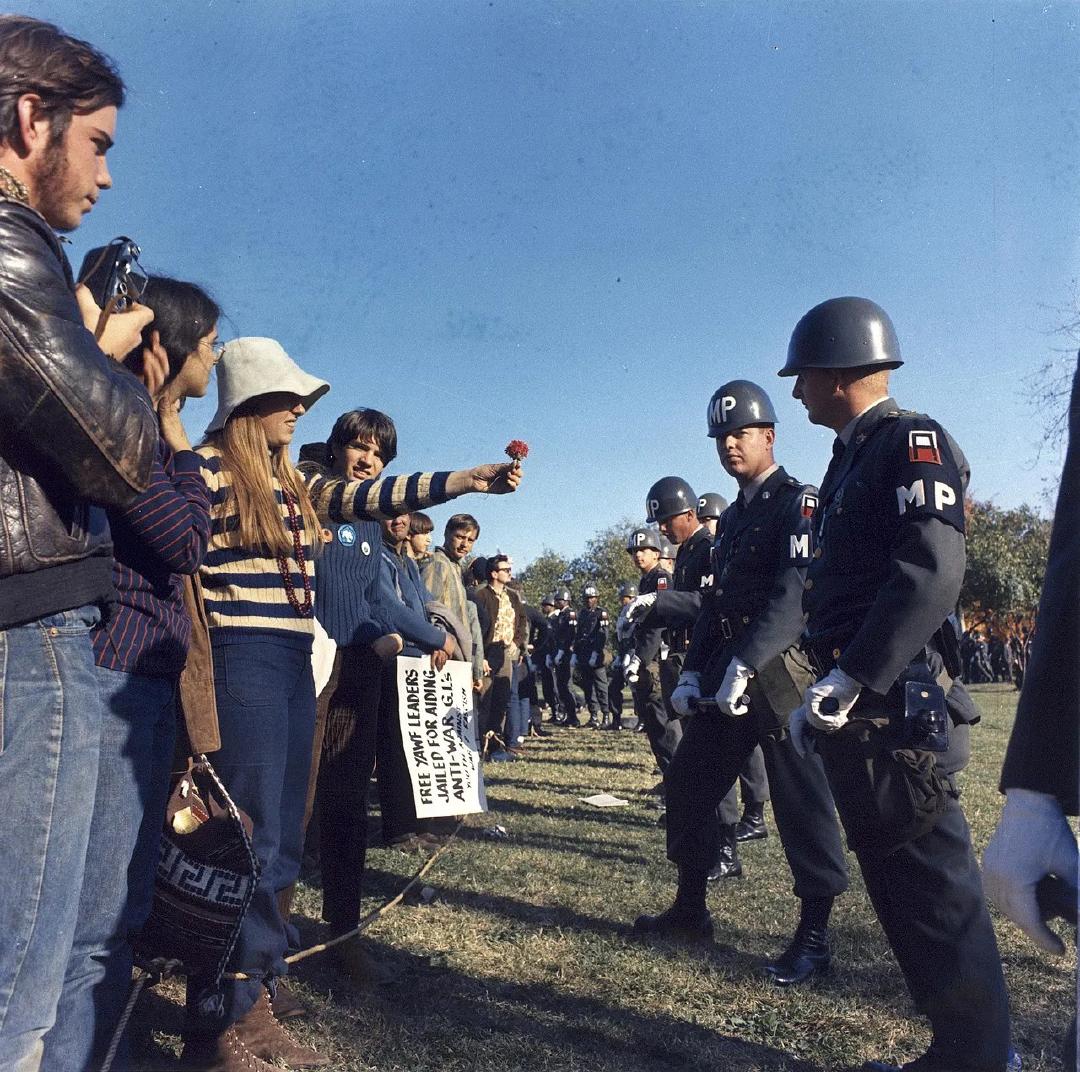The 1967 Pentagon Protest

The demonstration was organized by the National Mobilization Committee to End the War in Vietnam and it was the first nationwide protest against the war.
On October 21, 1967, approximately 100,000 people gathered near the Lincoln Memorial in Washington to protest against the Vietnam War and stage a march towards the Pentagon. The demonstration was organized by the National Mobilization Committee to End the War in Vietnam and it was the first nationwide protest against the war.
Activists Abbie Hoffman, Allen Ginsberg, Ed Sanders, and Jerry Rubin, along with other protestors, planned an exorcism to 'levitate' the Pentagon off its foundation and put an end to the war. The group also intended to drop a multitude of daisies on the Pentagon. However, they were stopped by officials at the airport. Nevertheless, the daisies played a significant role in creating one of the most iconic images of the late 1960s. It was the picture of a young protester placing a flower into the barrel of a National Guardsman's rifle.
At the end of the protest, the Pentagon remained intact, but the aftermath was chaotic. Around 700 protesters were arrested, and dozens were hospitalized. Although the war in Vietnam continued for another seven years, the march on the Pentagon had a profound impact on public opinion about the conflict.
The 1967 Pentagon protest is remembered as an example of the polarizing debate surrounding the Vietnam War. Ironically, the protesters helped the federal government reaffirm its commitment to civilian control. Deputy Marshals, rather than soldiers, arrested the demonstrators and confirmed the enduring principle of civilian supremacy in the United States.
Images


